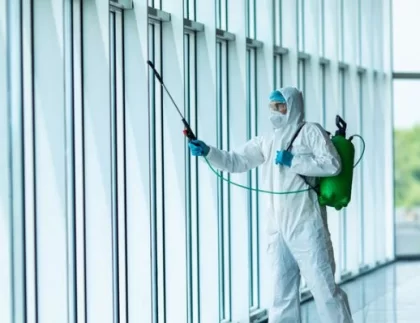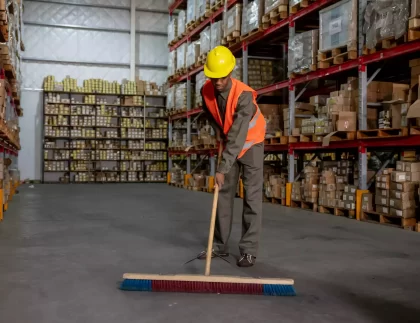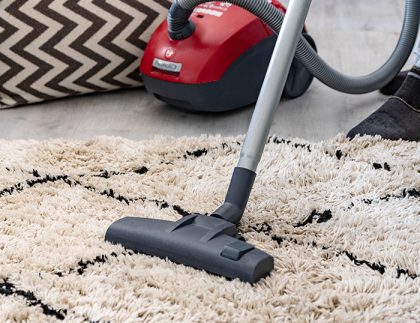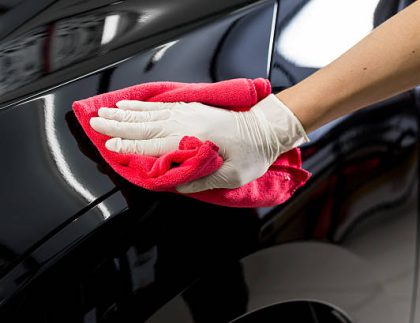
Why Office Furniture Cleaning Deserves Attention?
Office furniture is one of the most frequently used assets in any workplace. Chairs, desks, conference tables, filing cabinets, and sofas are used every day, often for long hours. While floors and restrooms usually get priority in cleaning schedules, furniture is often neglected. This leads to dust buildup, stains, and even the spread of germs.
A well-maintained office space is not just about aesthetics. Regular office furniture cleaning plays an important role in protecting employee health, maintaining professional standards, and extending the lifespan of your furniture investment. When furniture is clean, the workplace looks more inviting and professional, creating a strong impression on clients and visitors.
Clean furniture also reduces the risk of allergens and bacteria spreading among employees. In turn, this contributes to fewer sick days, higher productivity, and overall workplace satisfaction.
Daily Furniture Cleaning Habits
Small, consistent habits can make a big difference when it comes to maintaining furniture. Daily upkeep prevents dirt and germs from building up, making it easier to handle deep cleaning tasks later.
Desks and Workstations
Desks are where employees spend most of their time, so they need to be kept clean. A simple daily wipe with a microfiber cloth can remove dust and crumbs. High-touch areas like keyboard trays, drawer handles, and armrests should be disinfected regularly to reduce the spread of germs.
Chairs
Chairs, especially those with fabric or mesh, accumulate dust and sweat quickly. A quick brush-down or vacuuming at the end of each day helps keep them fresh. Leather chairs benefit from a soft cloth wipe to remove dirt particles.
Shared Furniture
Conference tables, waiting room sofas, and break room furniture are used by multiple people daily. These areas should be sanitized each day to ensure hygiene for all employees and visitors.
Weekly Office Furniture Cleaning Checklist
Daily habits handle surface dirt, but weekly cleaning addresses hidden buildup.
- Vacuum upholstery thoroughly to remove dust and allergens.
- Polish wooden desks with a suitable furniture cleaner to maintain shine.
- Clean storage cabinets and filing units to remove dust layers.
- Disinfect shared areas like conference tables and reception furniture.
Weekly cleaning prevents long-term damage while keeping furniture looking professional.
Why Office Furniture Cleaning Deserves Attention?
Office furniture is one of the most frequently used assets in any workplace. Chairs, desks, conference tables, filing cabinets, and sofas are used every day, often for long hours. While floors and restrooms usually get priority in cleaning schedules, furniture is often neglected. This leads to dust buildup, stains, and even the spread of germs.
A well-maintained office space is not just about aesthetics. Regular office cleaning plays an important role in protecting employee health, maintaining professional standards, and extending the lifespan of your furniture investment. When furniture is clean, the workplace looks more inviting and professional, creating a strong impression on clients and visitors.
Clean furniture also reduces the risk of allergens and bacteria spreading among employees. In turn, this contributes to fewer sick days, higher productivity, and overall workplace satisfaction.
Daily Furniture Cleaning Habits
Small, consistent habits can make a big difference when it comes to maintaining furniture. Daily upkeep prevents dirt and germs from building up, making it easier to handle deep cleaning tasks later.
Desks and Workstations
Desks are where employees spend most of their time, so they need to be kept clean. A simple daily wipe with a microfiber cloth can remove dust and crumbs. High-touch areas like keyboard trays, drawer handles, and armrests should be disinfected regularly to reduce the spread of germs.
Chairs
Chairs, especially those with fabric or mesh, accumulate dust and sweat quickly. A quick brush-down or vacuuming at the end of each day helps keep them fresh. Leather chairs benefit from a soft cloth wipe to remove dirt particles.
Shared Furniture
Conference tables, waiting room sofas, and break room furniture are used by multiple people daily. These areas should be sanitised each day to ensure hygiene for all employees and visitors.
Weekly Office Furniture Cleaning Checklist
Daily habits handle surface dirt, but weekly cleaning addresses hidden buildup.
- Vacuum upholstery thoroughly to remove dust and allergens.
- Polish wooden desks with a suitable furniture cleaner to maintain shine.
- Clean storage cabinets and filing units to remove dust layers.
- Disinfect shared areas like conference tables and reception furniture.
Weekly cleaning prevents long-term damage while keeping furniture looking professional.
Cleaning Methods for Different Furniture Types
Every office contains different kinds of furniture, and each material requires special care. Using the wrong product or method can cause permanent damage.
Wooden Furniture
Wood brings warmth and elegance to offices but is sensitive to moisture and chemicals.
- Dust daily with a soft, dry cloth.
- Use mild wood cleaners for stains.
- Avoid soaking with water to prevent warping.
- Apply polish once a month to maintain the finish.
Upholstered Chairs and Sofas
Fabric upholstery traps dust, food crumbs, and allergens.
- Vacuum weekly with an upholstery attachment.
- Spot clean stains immediately before they set.
- Schedule steam cleaning every three to six months.
- Use protective sprays to prevent deep staining.
Leather Furniture
Leather furniture adds a premium look but needs conditioning.
- Wipe daily with a dry cloth.
- Clean monthly with leather-safe cleaners.
- Apply conditioner to prevent cracking and fading.
- Keep away from direct sunlight and heaters.
Metal Furniture
Metal desks, filing cabinets, and shelves are durable but prone to rust.
- Clean with a damp cloth and mild detergent.
- Dry thoroughly to avoid water spots.
- Apply anti-rust solutions when necessary.
- Avoid abrasive cleaning tools that scratch surfaces.
Glass Furniture
Glass tables and partitions look modern but show fingerprints quickly.
- Wipe daily with glass cleaner.
- Use lint-free microfiber cloths for a streak-free finish.
- Avoid ammonia-based cleaners on treated or tinted glass.
How to Clean Office Chairs Effectively
Chairs are often overlooked, but they are the most used office furniture. Employees spend hours sitting, which makes cleanliness essential for both hygiene and comfort.
- Fabric Chairs: Vacuum regularly, use fabric cleaner for stains, and schedule deep cleaning periodically.
- Leather Chairs: Clean with mild solutions, condition often, and avoid sharp objects that can scratch.
- Mesh Chairs: Vacuum using a brush attachment and wipe frames with damp cloths.
Well-maintained chairs not only look better but also improve posture and overall comfort.
Preventive Maintenance Tips
Prevention is better than cure when it comes to furniture maintenance. Simple steps can save money on costly repairs or replacements.
- Use mats under office chairs to protect the flooring and furniture legs.
- Place coasters under cups and glasses to prevent stains on wooden tables.
- Encourage employees to keep food away from desks to minimise spills.
- Rotate chairs and tables occasionally to balance wear.
These small preventive measures extend the lifespan of your furniture while keeping the office looking fresh.
Eco-Friendly Office Furniture Cleaning
Businesses today are embracing sustainability, and cleaning practices are no exception. Eco-friendly cleaning not only protects furniture but also promotes a healthier work environment.
- Switch to plant-based or biodegradable cleaning products.
- Use reusable microfiber cloths instead of disposable wipes.
- Opt for steam cleaning, which reduces chemical use.
- Recycle or donate old furniture instead of discarding it.
Green cleaning practices align with corporate responsibility and make the workplace healthier for employees.
Creating an Office Furniture Cleaning Schedule That Works
The best results come from having a structured cleaning schedule that includes daily, weekly, and quarterly tasks.
- Daily: Wipe surfaces, dust chairs, and disinfect high-touch areas.
- Weekly: Vacuum upholstery, polish wood, and clean shared furniture.
- Quarterly: Deep clean, steam clean, and polish thoroughly.
A cleaning schedule ensures that no furniture is overlooked and the office always looks professional.
The Role of Employees in Office Furniture Cleaning
While professional commercial cleaning teams do most of the work, employees also play a role in maintaining office hygiene. By following a few basic practices, they can keep the furniture in better condition.
- Avoid eating directly at desks.
- Wipe accidental spills immediately.
- Keep personal workstations organized.
- Report stains or damage to the cleaning staff promptly.
Encouraging employees to take responsibility creates a culture of cleanliness and care.
Final Thoughts
Office furniture is an essential part of every workplace, and keeping it clean goes beyond appearances. With daily routines, weekly tasks, preventive care, and occasional professional cleaning from JBN Cleaning, your furniture will last longer, look better, and contribute to a healthier environment. A systematic approach to office furniture cleaning ensures your workplace remains productive, welcoming, and professional at all times.










